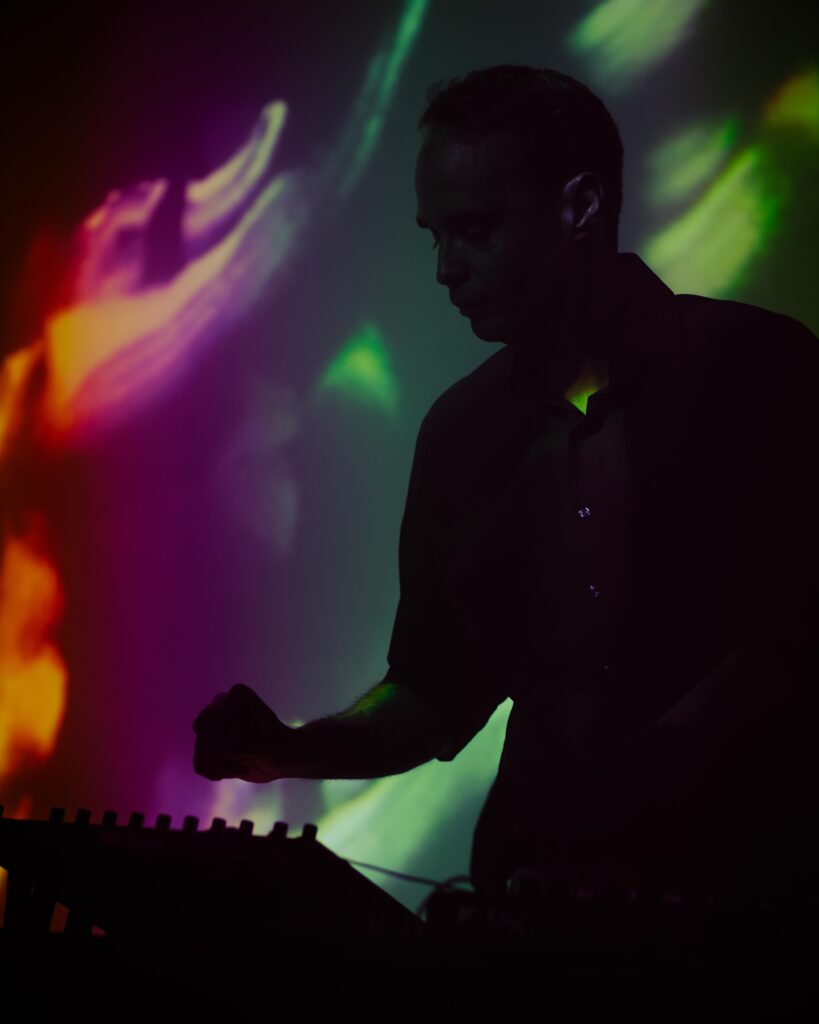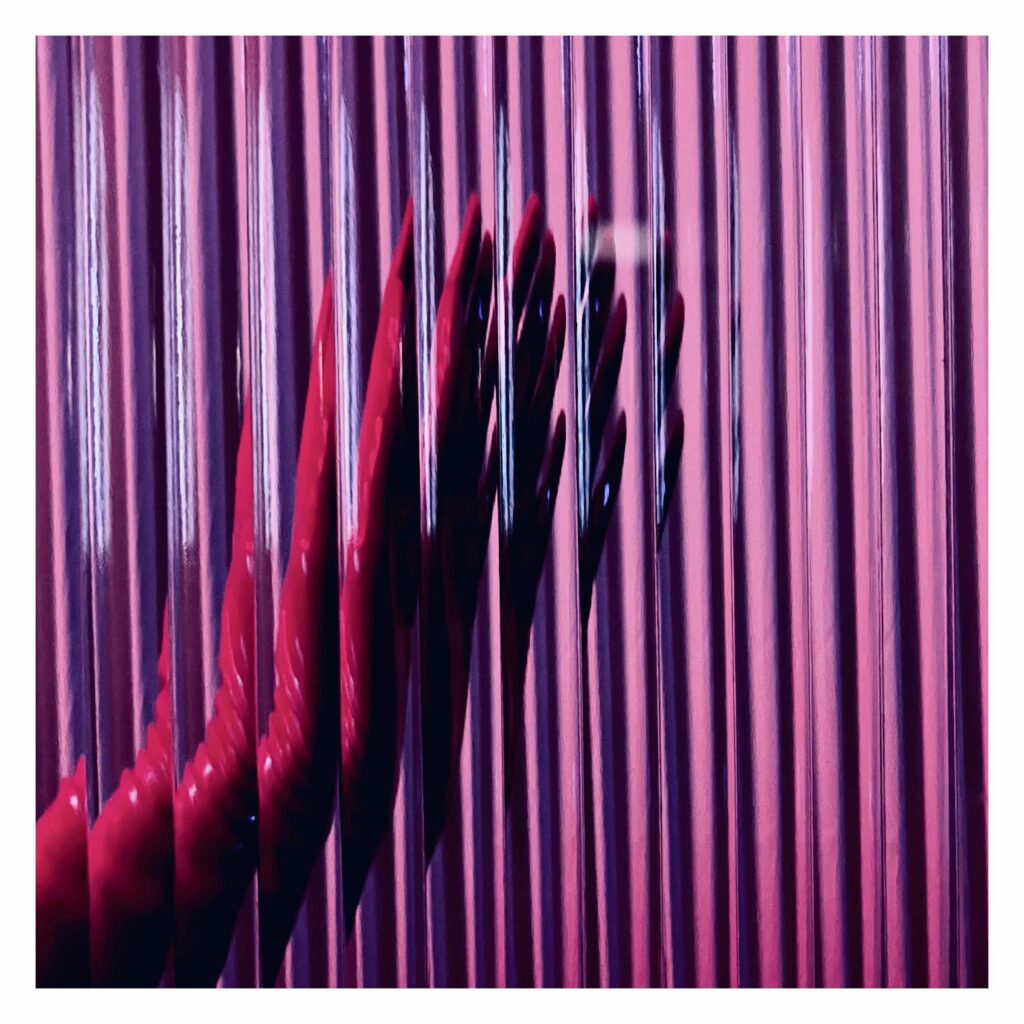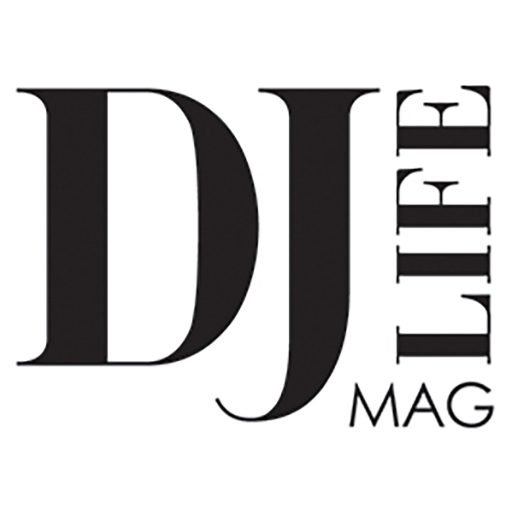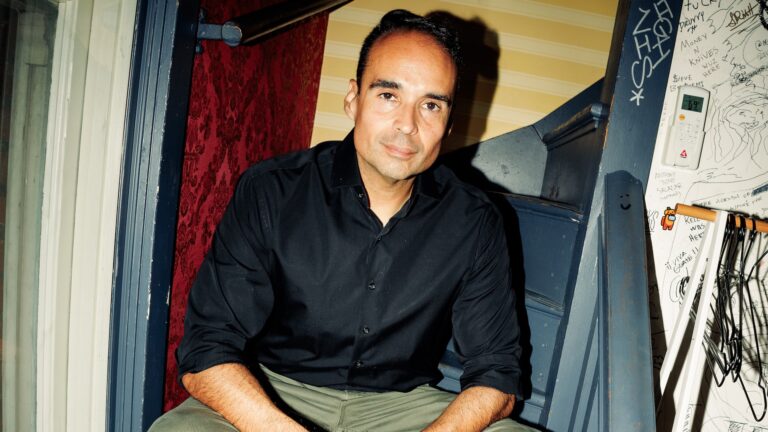DJ LIFE sits down with John Tejada to discuss his latest 7-track Resound release, DJing, vital gear & plugins & more.
There’s nothing formulaic about John Tejada or his music. In creating his engaging soundscapes, surprising rhythms, and tasty melodies, Tejada’s approach is wondrously varied. And if you listen to Resound, his new, seven-track full-length, it’s all there for you.
Opening track/initial single, “Simulacrum,” immediately commands attention. A mix of rugged rhythms, analog bassline, and detuned feedback sets you up before a gorgeous melody carries you away. On “Fight or Flight,” Tejada matches ethereal vocals from March Adstrum – his bandmate in the duo, Optometry – with head-bobbing breakbeats for sublimely moody effect. And the gorgeous “Trace Remnant” is a real journey of a tune. While shimmery and cinematic, its tough rhythms and strong dynamics make for something that can work in a dark club, as well.
But regulation EDM this is not. Fact is, Tejada has been making splendid, yet diverse electronic music for years, mixing genres and inspirations, seemingly unmoved by the flavors of the day. Pursuing his muse, he’s been running his imprint Palette Recordings since 1996, and Resound is solo album No. 15.
Sufficiently inspired as well, DJ LIFE connected with the Los Angeles-based DJ/producer to discuss his superb new album and more.

DJ LIFE: Creatively, how did you approach Resound?
John Tejada: During the last year or so, I was trying some new ideas and wanted to land on something that had a personal sonic signature and worked together as a theme. I wanted to do something more personal and unique to me, but also not reinvent the wheel completely. After trying quite a few things that didn’t work, I eventually landed on this sonic recipe of drums and basslines as a foundation, while imperfect layers of synth – and sometimes guitar – feedback layers filled out the rest. There were a few stories I wanted to try to tell without words, or at least try to convey those emotions. The layers of feedback had a nice feeling to me, without trying to make the elements sound old or worn, or layering synths. They create a tone as a whole that tells a story and expresses how I feel.
DJ LIFE: The opener, “Simulacrum,” is a really impactful track. What went into it?
Tejada: Overall, all the songs share the same limited choice of instruments. The core of all the songs is sort of divided into the rhythm, the bassline synth – the same one is used throughout – and then the melodic feedback layers that work on top of that. In a way, the drums and bass and melodies could almost be separated into two different versions. There was a lot of experimentation of what worked and what didn’t, with many songs not making the album. When elements did click together, it worked in this kind of formula that “Simulacrum” has. The layers of feedback gave the songs a level of emotion that reminded me of albums I really enjoy that reveal layers over time and require repeated listens. Also, in the case of this song, the bassline is the driving hook. If the bassline felt memorable, the extra layers were there to complement nicely in a dreamy sort of way and the drums drive the track in an unexpected way.
DJ LIFE: “Fight or Flight” is also notable, especially for what you did with March Adstrum’s vocals…
Tejada: March had quite a lot of great input regarding these tracks, helping with arrangement ideas and other suggestions. There was a certain recipe that would resonate with both of us and that helped guide the direction of how the songs fit together. Even though we were working regularly on our own new material, this song was different. It would be my song featuring her, but not totally work as an Optometry song. I’m such a big fan of what she does lyrically. Sometimes it takes a while before I learn the stories behind what she sings, but for this, it was sort of exactly what I needed at that time: “Fight or flight, pick your battles.”
DJ LIFE: And “Trace Remnant” is quite cinematic.
Tejada: This is one of the two songs that features a guitar loop, as I’ve been getting into playing again this year. The loop isn’t even synced to tempo, which keeps it more interesting to my ears. I wanted to have a variety of drum feels on some of the tracks and wanted to have the energy of a live drummer driving the song. Inspiration-wise, this one is on the hopeful side, but all the songs have a story to tell.
DJ LIFE: By the way, it’s nice hearing breakbeats again.
Tejada: Yeah, thanks! I feel I’m hearing more usage of breaks again these days with the resurgence of some ’90s sounds. I grew up on hip-hop and am a big fan of late ’90s drum-n-bass productions. I feel there’s such an art to making the drums sound right. In this case, there are a bit of break textures, but a lot of it are Karplus-Strong synthesized sounds to complement the acoustic sounds.
DJ LIFE: I’ve always appreciated the fact that your music is never formulaic and that genres don’t ever seem to constrain you. How have you managed to define and keep your space in this world?
Tejada: I feel this is something I have to do in order to truly feel creative and happy. I have to let go and realize it doesn’t matter if no one likes this record – but most importantly, I have to love it. When I started in the early ’90s, it seemed really discouraged to copy someone else’s sound, whereas nowadays it’s more encouraged to copy a template and for everyone to do the same thing to make the charts or to make a huge festival tune. Where’s the fun in that?
DJ LIFE: You’ve run Palette Records for years now. How do you balance the demands of both art and commerce?
Tejada: Initially, it was only vinyl and then some CD on album projects. Once digital came into the picture, that changed things – and then, when streaming happened, it felt like it was all getting away from me a bit. But especially lately, I decided to embrace and learn how to adapt – and I’m really happy I have. It’s really exciting again to release my projects on my own label. Sometimes there are a slew of new things to learn, but I find most of it to be interesting and there’s still a way to do it my way. In regards to balance, I have to keep a to-do list and then ignore all of that when I’m in a creative zone. But I find it manageable and exciting to create and plan my own releases.
DJ LIFE: What advice would you give a DJ/producer on running a label?
Tejada: One thing I notice a lot with younger artists is they will spend months or maybe years working on their music, but then when it comes to releasing the work, there is no plan. I realize so many of the things that go alone with releasing music, distribution and promotion can be quite daunting, but it’s important to learn the landscape and how it all works. Just like anything, it’s something you get better at by doing, and it’s important to learn to grow as an artist.
DJ LIFE: What’s your DAW? Monitors?
Tejada: I use five different DAWs to keep things interesting: Logic Pro, Ableton Live, Bitwig, Reaper, and Renoise. They all give a different perspective on working, even though they essentially all do the same thing. I find it inspiring to change up my way of working. Monitor wise, I do a lot in headphones these days, Campfire Audio for on-the-go and Rosson Rad-0 for studio use. Main monitors are ATC SCM25, but I find my Auratone to be more effective, usually, for balancing. I’m not a fan of needing fancy things, so I like the idea of something affordable being so valuable to my work.
DJ LIFE: Vital hardware? Fave plug-ins?
Tejada: Vital hardware would be the Roland SH-101 and Prophet 5. That would be most all the synths on this album. Plug-ins? Gosh, they seem so disposable – don’t they? But I love trying lots of them all the time. I like what Minimal Audio are doing and their new synth is bonkers. Then, there’s my trusted FabFilter, which covers so much ground. I like what Goodhertz and Leapwing Audio are doing as well.
DJ LIFE: Do you have a process for creating music?
Tejada: I don’t have a repeatable process for making music. But I sort of have a sense of the recipe I want to try, and if a sound starts to get exciting, the rest of the track will quickly build around it. But if the initial sketch doesn’t come together fairly quickly, then I’ll most likely move on. In the case of these songs, there were experiences and emotions I wanted to express. So that adds a sense of vulnerability, but that can also be of great use.
DJ LIFE: Which producers do you most appreciate?
Tejada: I’m so lucky to have gotten to know and work with some of my favorite artists. I’m a long-time Plaid fan and have gotten to collaborate with them multiple times now, trading remixes or just being able to talk music and inspiration with them. Other good friends would include Juan Mendez aka Silent Servant, Jimmy Tamborello aka Dntel, Robag Wruhme, Stefan Betke aka Pole, and so many others.
DJ LIFE: In the DJ booth, what do you use?
Tejada: I’m never that picky. I need a couple of CDJs and a good mixer. A lot of times I’ll get asked, “Hey, we have the new x2300” or whatever model numbers, and I usually don’t know what they’re talking about. I’m quite old-school where I just needed a couple of working 1200s and a decent mixer. I don’t know all the features on CDJs when it comes to cues and looping, etc. so I generally play them in vinyl mode, un-synced. I like the feel of playing on vinyl, as that’s what I did for hours and hours growing up.
DJ LIFE: Your style of DJing?
Tejada: I would say it’s becoming more and more personal, especially these days. Feeling like it’s less of a risk to play songs I’m really passionate about and just feeling like, if this song is inspiring to me and moves me, it should also move a crowd of people and make them feel something. The times I try to please the crowd are generally not as good for me or the crowd. Style-wise, I have a lot of influence in me from my hip-hop days. Less tricks these days for sure, but I do like to move through music a bit faster than most DJs, and I generally end up playing more titles that way. I still pride myself on long blends where two songs end of sounding like a new remix of each other. Those are still great feels to have.
DJ LIFE: Which DJs do you appreciate?
Tejada: I’ve always liked Pete Rock and DJ Premier a lot, also Claude Young, Daniel Bell, Jeff Mills. There’s a soul to these DJs, like they have a secret and they’re just giving you a glimpse of it. Always original and inventive.
DJ LIFE: Venues you’ve enjoy playing?
Tejada: They change so much over time. A lot of venues I really liked are gone now. The old Panorama Bar in Berlin – yup, there was another one in a different location. Fabric in London was always nice. Yellow, now gone, in Tokyo was fantastic. But I also really enjoy outdoor day events closer to home. I feel California has a lot of those to offer and really like to be outside with music these days.
DJ LIFE: How do you balance your studio time and your DJ/travel time?
Tejada: I’m not traveling as much as I used to, so I feel I can pick travels that fit with what I want to do, and not force myself to be on the road all the time. I’m also teaching at CalArts a bit, so between that and working on all of my musical projects, it keeps me busy, but is also nicely manageable.
DJ LIFE: You came from a musical family – how did that impact your path?
Tejada: One thing that coming from a musical family that was different for me was seeing that every day you practice your instrument. That was a reality for me from the youngest age I can remember and definitely had a huge impact on how I think about life and that being creative can be the main part of your life. I feel, because of this, I didn’t really have any options except to pursue music myself. As I got older, I got to hear more and more music and fell in love with many genres of music that inspired me along the way to try many things and eventually led me where I am today.
DJ LIFE: What led you to electronic music?
Tejada: In the early ’80s, I first started hearing a lot of New York City productions – Arthur Baker and John Robie, Newcleus, Marley Marl and many others. Incidentally, the instruments they used – vintage synths and drum machines – are still the machines that all the software manufacturers are emulating and still relevant in music production today. When I heard these sounds originally, they made such an impact. I didn’t think for years and years that I would try to make these sounds myself, or where they came from, but they were always on my stereo system and would always inspire me.
DJ LIFE: What are some tracks that are always in your DJ box?
Tejada: There are some unreleased Trevino songs I play all the time. Marcus [Intalex] was a dear friend of mine and unfortunately passed away in recent years. There’s usually always some Robag Wruhme track, as I love his unexpected arrangements and sound choices. Then, I’ve always got some fun bootlegs I’ve done just to play out for fun.
DJ LIFE: What’s next for you?
Tejada: We’re working on new Optometry material for early 2024 and there’s a collaboration with Nosaj Thing due before end of the year as well.



